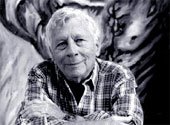11.13.1 Juan Pedro Blanco Rodríguez (Juan Blanco).

Juan Pedro Blanco Rodríguez was born in 1919 in Mariel, Pinar del Río. He began studying music there and continued at the Municipal Conservatory of Havana. He studied Civil Law at the University of Havana and graduated in 1942.
In 1942, Blanco filed a patent application with the Trademark and Patent Registry to provide the descriptive report and graphic information for an instrument of his invention, which he named “Multiorgan.”
Juan Blanco began composing in the 1950s, initially basing his works on folklore. This period includes works such as “Choral Triptych,” “Peace Cantata,” “Elegy,” “Quintet for Woodwinds and Cello,” and “Divertimento.”
In 1959, he was a founding member of the Nuestro Tiempo Cultural Society. In 1961, he served as President of the Music Section of the Union of Writers and Artists of Cuba (354 17th Street between G and H Streets, Vedado, Plaza de la Revolución, Havana). That same year, he began working as a professor at the Alejandro García Caturla Conservatory (31st Avenue and 82nd Street, Marianao, Havana), teaching Music History. He was also appointed director of the Band of the General Staff of the Cuban Rebel Army. He was an organizer of the Hermanos Saíz Brigade and a critic for the “Art and Literature” section of Bohemia Magazine.
Juan Blanco was the first Cuban creator to experiment, starting in 1961, with the new musical trends of the time, such as musique concrète, aleatoric, and electronica, and he excelled in the development of electroacoustic music. He is considered a pioneer of electroacoustic music in our country.
In the 1970s, in 1979 to be exact, he worked as a musical advisor to the Propaganda Department of the Cuban Institute of Friendship with the Peoples (ICAP) (Calle 17 No. 301 between H and I, Vedado, Plaza de la Revolución, Havana). He obtained funding and founded the ICAP Electroacoustic Music Workshop (TIME). He served as its director and taught classes there.
In 1981, he organized the first International Electroacoustic Music Festival, “Primavera en Varadero.” The festival now takes place in Havana under the name “Primavera en La Habana.”
He continued to hold important positions in both the national and international musical world. He served as national music director for the National Council of Culture, musical advisor to the Cuban Institute of Friendship with the Peoples (ICAP) (17th Street, No. 301 between H and I, Vedado, Plaza de la Revolución, Havana), musical advisor to the Casa de las Américas (3rd and G Streets, Vedado, Plaza de la Revolución, Havana), scriptwriter and host of a program on contemporary music on the CMBF radio station, vice president of the Cuban section of the International Music Council (CIM-UNESCO), and a judge on several editions of the GMEB International Electroacoustic Music Competition held in Bourges, France.
He has also given countless lectures, courses, and master classes at universities and music centers in countries such as Cuba, Spain, Sweden, France, Italy, Mexico, Costa Rica, the United States, Puerto Rico, Venezuela, Greece, China, the Netherlands, Brazil, Russia, Poland, Hungary, and Canada.
Juan Blanco was appointed Honorary Director of the ICMC 2001 International Conference on Computer Music, held that year in Havana. He is also President of the Cuban Federation of Electroacoustic Music (CIME/UNESCO) and Vice President of the Cuban Section of the UNESCO International Music Council.
Blanco’s oeuvre encompasses approximately 200 works, including choral music, electroacoustic and computer music in all its forms, multimedia performances, and various series of works that include music for dance, theater, film, ballet, and gymnastics.
Among his most notable works are: Dance Music, Ensemble V, Studies for Magnetic Tape, Textures, Episode, Spatial Counterpoint and Erotophonies.
Juan Blanco sadly passed away in 2008.
Juan Blanco was awarded various prizes for his musical work over so many years: 2002. National Music Prize – 2001. “Félix Varela” Order – 1988. “Alejo Carpentier” Medal.








